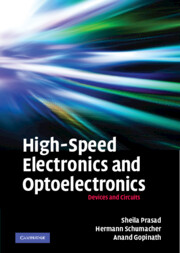3 - Optimisation and parameter extraction of circuit models
from Part One - Devices
Published online by Cambridge University Press: 05 August 2012
Summary
Executive summary
Optimised device models are important in the design of electronic devices for specific performance. They help the designer to predict the behaviour of the device in an analogue circuit. However, standard methods of optimisation do not lend themselves to fast computation and may present problems with convergence. The simulated annealing, genetic and structured genetic algorithms are alternative optimisation methods that help to solve the convergence problems by avoiding entrapment in local minima of the solution space. These methods are used for the extraction of the parameters of the equivalent circuit model of the device or to construct its neural network model. The neural network models are black box models that determine device outputs from known inputs after appropriate weighting values have been calculated. Another method of parameter extraction is the semi-analytical procedure that uses an analytic approach together with empirical optimisation methods. Basic expressions and approximations to extract small-signal equivalent circuit parameters are developed so that accurate device models can be obtained.
Optimisation of device models
Accurate device models are developed to predict behaviour that is in good agreement with experimental observations. The optimisation of the model parameters can be considered to be the curve-fitting of the computed device characteristics to experimental data. Traditional gradient methods are computationally intensive and there are problems with convergence and entrapment in local minima. Optimisation only involves the “trial” of a number of initial solutions to minimise the error.
Combinatorial optimisation overcomes this problem of entrapment in local minima. To set up the device modelling problem as a combinatorial optimisation problem, the limits on each parameter are specified.
Information
- Type
- Chapter
- Information
- High-Speed Electronics and OptoelectronicsDevices and Circuits, pp. 163 - 220Publisher: Cambridge University PressPrint publication year: 2009
